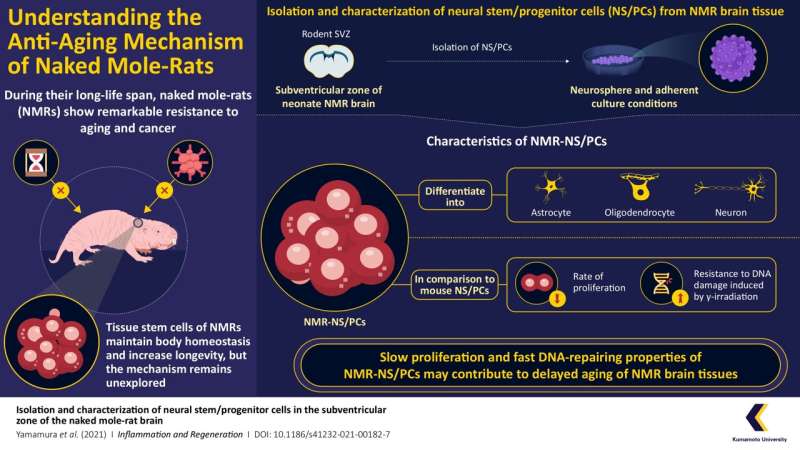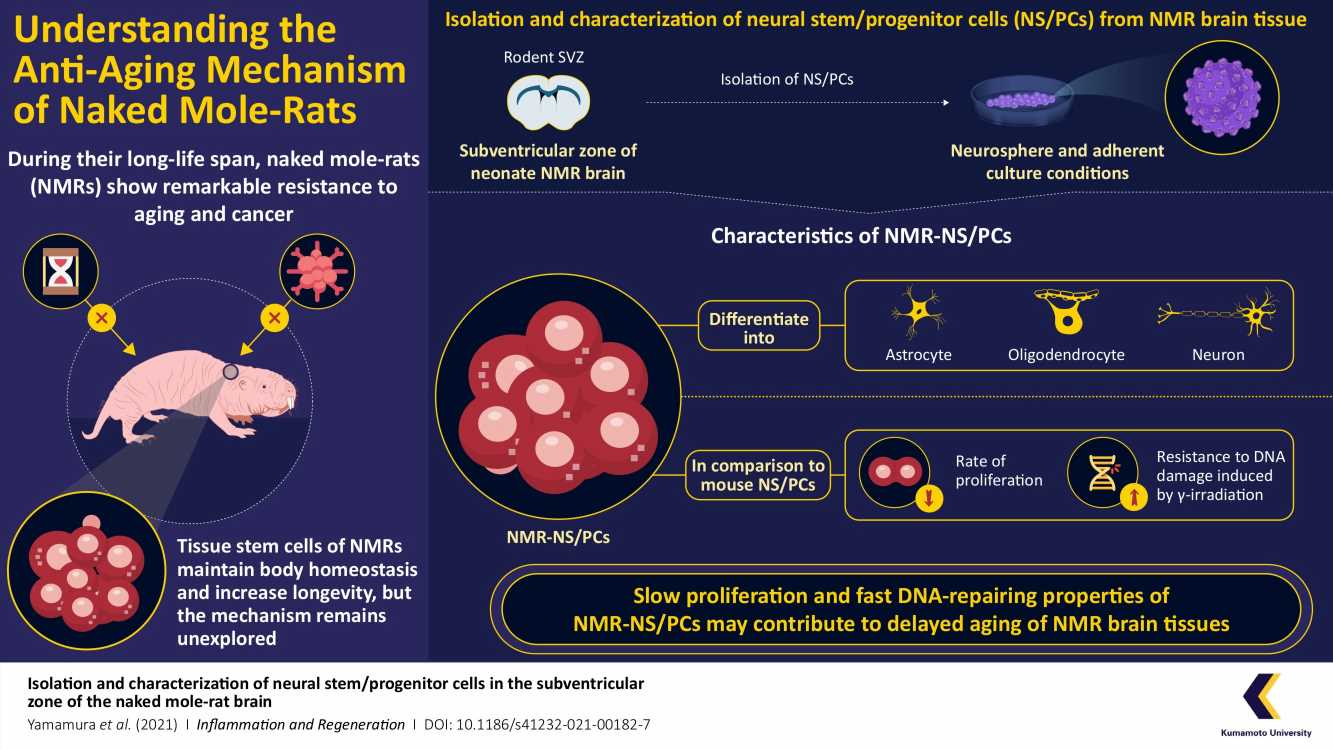
Naked mole-rats (NMRs)—the longest living rodents—show remarkable resistance to aging and cancer. NMRs have long fascinated those involved in aging research and cancer research. Now, for the first time, researchers from Japan, have successfully isolated stem cells from the brains of NMRs. Their findings reveal how these cells of NMRs maintain “body homeostasis,” which is key to their aging and cancer resistance.
Tissue-specific stem cells—stem cells that differentiate to form specific specialized cells—are located throughout the body. These cells help maintain a body’s equilibrium or homeostasis and also help repair tissues. Aging and cancer are caused by the dysfunction and depletion of tissue-specific stem cells.
Naked mole-rats show very few physical attributes of aging (phenotypic aging), as well as a high capability of maintaining body homeostasis. What do NMR stem cells say about their resistance to aging and cancer? To answer this question, researchers from Japan, led by Associate Professor Kyoko Miura from Kumamoto University, isolated neural stem cells from new-born NMRs and studied their properties. Their study has been published in Inflammation and Regeneration.
For their study the researchers focused on neural stem and progenitor cells (NS/PCs). “Recent studies have indicated that NS/PCs play a crucial role in the development of malignant brain tumors, but little is known about the properties of NMR-NS/PCs. Ours is the first study to isolate and report on NMR-NS/PCs,” explains Dr. Miura.
The research team isolated NS/PCs and from the subventricular zone of neonatal NMR brains and cultivated them in “neurosphere” and adherent culture conditions—the culture system is a novel accomplishment in the field of NMR research. They then compared the characteristics of the cultured NMR NS/PCs with NS/PCs from laboratory mice. They examined the cultures and looked for markers from the different cell types that NS/PCs differentiate into, as well as analyzed cell growth and cell (division) cycle properties of both NMR and mouse-derived NS/PCs. Finally, they investigated DNA repair in both types of NS/PCs after the cells were exposed to gamma rays.
They found that NMR NS/PCs differentiated into three types of cells, neurons, astrocytes and oligodendrocytes, all three of which play a role in the central nervous system. They also saw that NMR NS/PCs took significantly longer to proliferate than the cells from laboratory mice. In fact, a higher percentage of NMR NS/PCs remained in the G0 and G1 phases of the cell (division) cycle, which are the periods in which cell division is arrested and the cell prepares for division respectively. Finally, they say that NMR NS/PCs began DNA repair more quickly than their mice counterparts when their DNA was damaged by gamma rays. These cells were also more resistant to post-radiation death.
“We found that the DNA damage response of NMR NS/PCs is quite unusual. At the early stages the NS/PCs showed less DNA damage and had a greater number of DNA repair sites,” says Dr. Miura, “But why is DNA repair so efficient in NMR NS/PCs? That can only be answered by future research.”
Future research will focus on a comparison of NS/PCs in NMR and laboratory mice after they have grown to the adult stage because adult neural stems have greater importance in the fields of cancer and aging research. The regulation of the cell (division) cycle in NMRs also requires more in-depth study. However, the successful isolation and culture of NMR NS/PCs is reason enough for celebration. “By going deeper into the research, we can extend our current findings and develop new methods to prevent aging and cancer in the human brain. That is the ultimate goal,” concludes Dr. Miura.
Source: Read Full Article
